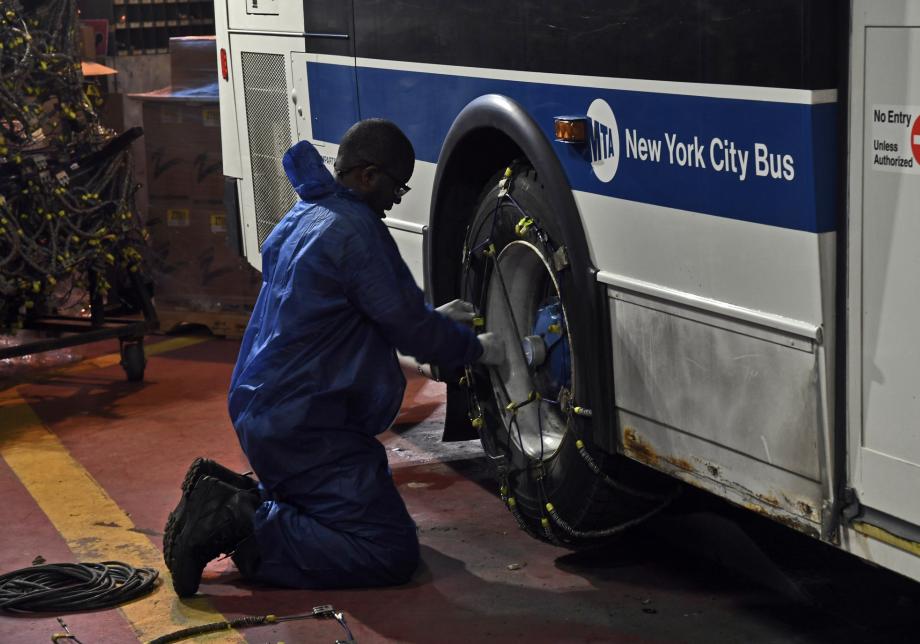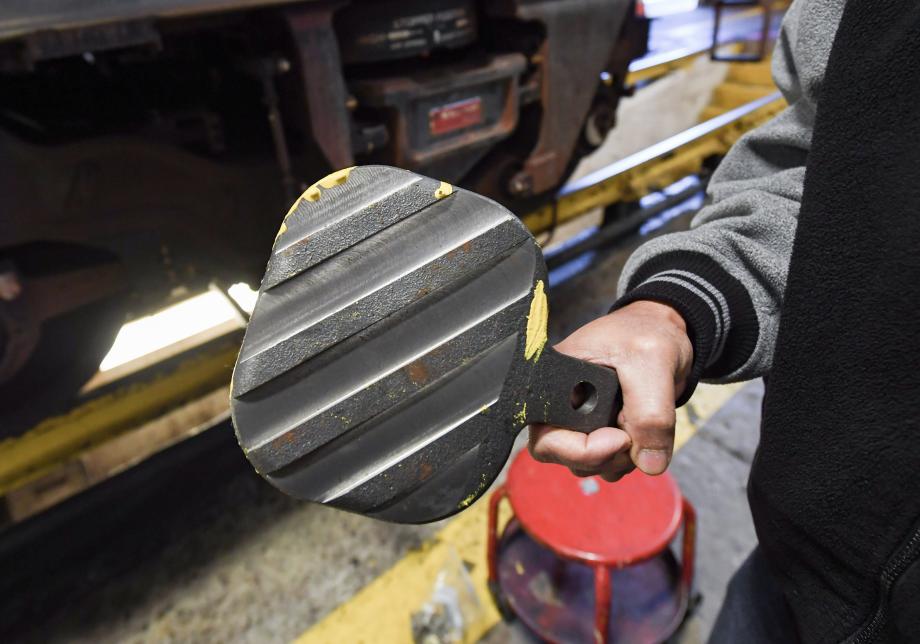Preparing to travel during extreme weather
How you can travel safely
- Use handrails in stations and trains.
- Be careful boarding and exiting trains. Don’t move between train cars.
- Don’t run, especially on wet or icy surfaces.
- Listen for station announcements and check digital signs in stations for updates.
- Check the weather and transit service status before you travel. If the weather is severe enough, it might be safer to not travel at all if you can avoid it.
Get real-time information
We want you to know about service changes as far in advance as possible. Find the latest service status on our homepage or in the MTA app. You can also follow us on Twitter at @MTA, @NYCTSubway, @NYCTBus, @MetroNorth, and @LIRR. Or, sign up for email and text alerts.
What subway service to expect based on weather
These are the best predictions we can make without knowing specific details about a storm. We always do our best to tell you about service changes as soon as we can.
- Storm warning: Regular service.
- 1-7 inches of snow: Regular service. You might see salt and sand on platforms.
- 8-12 inches of snow: Reduced service, especially on express tracks.
- 12+ inches of snow, or blizzard conditions: Significant service suspensions or a full system shutdown are possible. You should only travel if it’s essential.
- Subzero temperatures, without precipitation: Regular or reduced service. Some express service might be suspended, depending on where we park trains to keep them out of the elements.
- Ice, sleet, freezing rain: Regular or reduced service. Some express service might be suspended, depending on where we park trains to keep them out of the elements.
Other possible service changes due to weather
We work with city and state partners to monitor weather and keep our riders, employees, and equipment safe. Find the latest service information on our homepage or on the MTA app.
These are examples of service changes you may see. Our plans change depending on specific weather conditions.
Subways
- Express trains running local
- Trains running only on the underground parts of a line or the entire system
- No trains running on some lines
- No trains running throughout the system
Buses
- Route cancellations
- Longer waits between buses
- Buses might skip stops
LIRR and Metro-North
- Reduced or suspended service on some routes
- Reduced or suspended service throughout the system
Staten Island Railway
- Trains running local
- Delays in service while we clear snow and ice from the tracks
- Might shut down service on the whole line
Access-A-Ride
- Reduced or delayed service
- Feeder service and conditional eligibility might not be enforced
- Reservations accepted up to 24 hours in advance, instead of 48
Bridges and tunnels
- Speed restrictions on roadways, ramps, and toll plazas
- Reduced road capacity or closures
- For bridges, speed restrictions or intermittent closures
How the subway prepares for winter weather
Map for severe weather service
How we prepare
We make a snow plan
For train yards
Our train yards are like parking lots for trains. They're very important to us keeping service running or restoring service after a shutdown. So we work hard to keep them free of snow and ice.
This is easier when trains aren’t in the yards. Sometimes we use express tracks to store trains when we need to clear the yards. This means express trains would run on the local track.
For stations and platforms
In stations, you’ll see us salting stairs and doing other things to help keep conditions safe for travel.
We use special equipment
Special vehicles like snowthrowers, de-icers, and jet-snowblowers help us keep tracks clear of ice and snow. We spray a lot of our equipment with a de-icing agent.
On electric trains, we use special third rail shoes with holes in them to prevent snow from sticking.
We put snow chains on buses to help them navigate winter road conditions.


